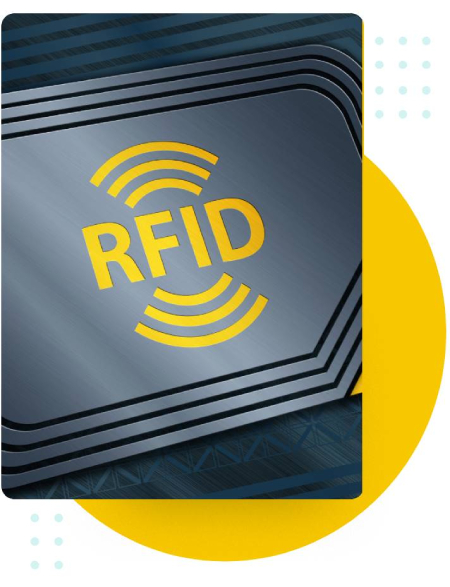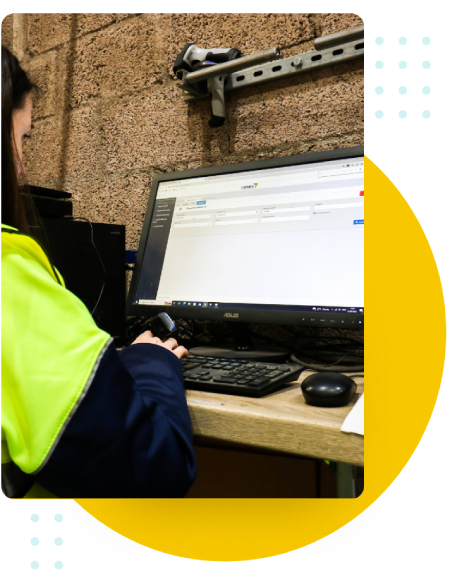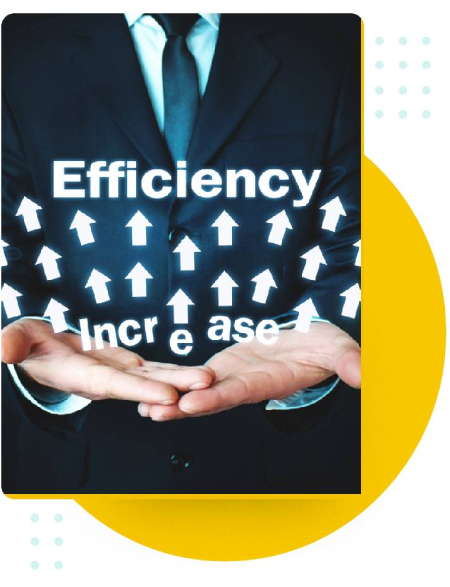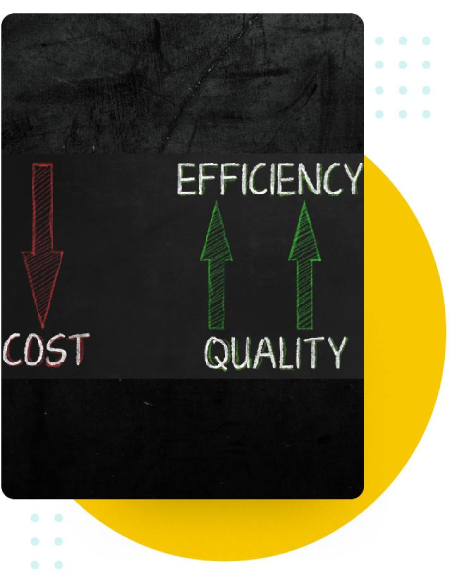Meet Canary7
The Definitive Guide to RFID Inventory Management
Reliable, Robust 3PL Solutions; Now at your service.
Reliable, Robust 3PL Solutions; Now at your service.
Reliable, Robust 3PL Solutions; Now at your service.
If all you can think of when you think of inventory management are spreadsheets and complex graphs, we have bad news: your inventory management processes are outdated.
While back in the day inventory management was all about creating spreadsheets, working your way through hundreds of figures, and tedious paperwork, it simply isn’t the case anymore. Thankfully, today, inventory management is a technologically advanced, relatively simple procedure that really helps you make necessary improvements to your stock-handling experience. More and more businesses can jump on the bandwagon and equip their warehouses with top-notch solutions that can contribute towards their success.
There is no shortage of technology and AI when it comes to making inventory management easier and considerably more worthwhile. For example, RFID technology. Increasingly, businesses of all nature and sizes are looking into RFID for asset tracking and inventory management, and the results have been phenomenal
In this guide, we cover everything you need to know about RFID inventory management: from the evolution of RFID in the marker, to the role of RFID in inventory management, right down to what your pick for the best RFID inventory management system software should be!
Contents:
Before we can take a look at RFID for asset tracking and inventory management, it is important to understand what RFID is to begin with. In this section, we will look at a multitude of things that can help us gauge how RFID software came into being, what it really is, and how it works for businesses in terms of improving their supply chain.
RFID: Radio Frequency Identification. The name sounds quite future-forward, modern, and new – right?
Well, the thing is, RFID is anything but new. The advent of RFID can be traced back to World War II, when British soldiers used radio frequency to track and identify aircraft making systems. This means that technically, RFID has been in the game for quite a few decades, although its usage has dramatically changed from a military nature to everyday use.
And honestly, we get it. Afterall, RFID technology can really help businesses improve their operatives. In fact, did you know that manufacturers and distributors who implement RFID technology into their supply chain see an 80% improvement in their fulfillment processes like shipping and picking? Not only that, but warehouses and distribution centers that leverage RFID technology benefit from about 18% increase in visibility in terms of their processes? What about the fact that in 2021, the RFID technology market revenue worldwide in 2021 was 6.5 billion US dollars, which is a sharp increase from 2014, when the revenue was just 2.7 billion US dollars?
Simply put, RFID technology is becoming more and more present in the way businesses, manufacturers, and retailers run their businesses – and for good!

But what is it about RFID technology that makes it such an important element for businesses? To understand this, we must first be clear about what RFID technology is. Essentially, it is a form of wireless communication that makes use of electrostatic/electromagnetic coupling in the radio frequency portion of the electromagnetic spectrum. This is then used to identify an object, person, or even animals.
Let’s be real: that definition is taken from a scientific source, and hence, might be way too complicated and confusing for you to understand. In more simplistic words, RFID is technology that captures digital data, and then uses it to assign unique labels to objects via radio waves. This is not too different from magnetic strips at ATMs or barcode scanning that we are so used to – all of them are used to identify objects, and help you organise any kind of stock.
In case you are still not sure of how RFID technology works, it would be good to take a look at the actual process of putting RFID technology to use. It consists of three components: antenna, transceiver, and transponder. Essentially, the first two components i.e. the antenna and transceiver form the RFID reader. The reader is connected to a network and can be used as either a permanent or a portable device. It transmits signals to activate a unique tag by using radio waves. The antenna then receives these waves and translates them into data.
As for the transponder, it is the unique tag being created itself. Every RFID tag is different, and can vary in accordance with a range of different factors such as the RFID frequency, interference, type of reader, and type of reader.
Also, a good point to remember is that there are two main types of RFID tags. These are active RFID tags (tags that have their own power source) and a passive RFID tag (power comes from reading antenna).
As a whole RFID is a part of AIDC, which stands for Automatic Identification and Data Capture. This method is used to collect data about the objects being identified and then store it in a computer. As the name suggests, this process is fully automatic and requires no human intervention whatsoever.
All of that sounds way too complicated and scientific to be a part of the everyday world? Well, not for most businesses. This is because as more and more companies expand, integrating RFID in their supply chain becomes more or a less a necessity.
With expansion comes an extra layer of innovation, complexity, and productivity. This means that there is more need for accuracy at each point through the supply chain, and this accuracy can only be achieved with the help of technology.
Thanks to RFID, this is possible. RFID for asset tracking and inventory management, as well as for cargo, vehicle tracking, and other logistics is godsend, because it simplifies everything to a great degree. It improves visibility, refines the distribution process, and streamlines the entire supply chain.
The reason why many businesses today rely on RFID is because without it, they are more prone to inaccuracies and discrepancies. In a world where customers want exactly what they are looking for, such inaccuracies can cause a great detriment to your business and hinder you from creating an experience that leads to success.
In this section, we will talk about the benefits of RFID in general. This will also give you a pretty good idea as to why RFID inventory management is such a big thing as well.

As a business operating in the 21st century, you must understand that the only way to ensure your success is through making sure that you are regularly tracking your supply chain workflow. This is because the better you track your processes, the easier it is to collect data that can then be used to further improve your performance across different areas including, but not limited to, manufacturing equipment, inventory, asset management – in fact, many other company processes.
This is exactly where RFID comes into play. When integrated into multiple supply chain tasks, it makes things simpler. WIth RFID tech, you can actually complete a task that took you 3 hours earlier in just a matter of minutes. But that’s not even the best part; the best part is that these processes generate useful data just as quickly, and hence allow you to have better visibility of the direction your supply chain and business as a whole are going in.
Efficiency is another aspect that businesses strive for and RFID provides! Since it automates all work processes, it doesn’t require human supervision. This then means that you and your workforce can focus on other things, and leads to more productivity.
What makes it even more beneficial is that it does not need a direct line of site to read tags. In simpler words, this means that a bunch of different products can be read together, so your staff doesn;t have to put a lot of effort into processing a bulk of orders. There are many ways you can configure your reader, some of which may lead it to automatically read tag data, which ultimately means that you can do most of your tasks at the speed of lightning.


All businesses want to save money, and this is how RFID manages to become a core component in most operations. With the help of RFID technology, you can decrease capital costs to a great extent.
This is possible because RFID allows you to keep a tight control on all your assets and stock. This includes important machinery luike computer tech and field vehicles. Stay in track of all these things constantly means that you can always stay vigilant, and the chance of losing or misplacing these items is greatly reduced.
Although we live in times where it is possible for us to rely on technology for the most part, there are still some things that we (gladly) rely on human efforts for. Yet, the more you rely on your human efforts, the more you are opening yourself to the problems.
RFID automates all the processes it can, and thus ensures that human effort is barely needed! In fact, if you integrated RFID properly, you wouldn’t need any human intervention to read and organise data, which means that there is less space for things to go wrong, considerably more accuracy, and less money spent on labour.


Of course, the fact that RFID helps you keep a track of everything means that you are getting useful data out of it too – whether it is regarding product location, inventory, or safety stock, RFID can help you gain data.
This data can then be used to either improve your processes or understand the progress of your business better. Either way, it helps you outshine your competitors as you are able to make actual, data-backed decisions. You single-handedly minimise your problems, and hence allow your business to grow.
In fact, when it comes to data, there is no better option than RFID – since it allows you to take data collection a level ahead of what standard barcode labels give you. This is because RFID technology can withstand extremely high temperatures, humidity, and other harsh weather conditions as well as an exposure to chemicals or sunlight. This means that you are always in touch with your activity – so matter what the surroundings are like and hence the data collection is wholly accurate!
These are the main advantages of RFID technology – no matter what point of the supply chain you choose to integrate this technology in, you can rest assured that it will turn out to be for the best and will make your processes more efficient.
Enter your details to book a demo of the Canary7 WMS, built for 3PLs, and fulfillment houses.
Although RFID can be integrated in any part of the supply chain, the full potential of its usage can be understood in connection to inventory management. RFID inventory management has recently become a core process for many businesses, as it is a great way of leveraging technology to make stock handling considerably easier.
Now, RFID for inventory management as well as RFID technology comes with its own set of benefits and challenges. Yet, in this section, we will explore the positive impact RFID has on inventory management processes, and how RFID inventory management can ultimately streamline and accelerate the progress of any business.
But before we get into that, let’s look at how RFID inventory management works.
We have already discussed how RFID works in general. In connection to inventory management, it works in the same way and the main thing you need to be able to make use of it is a scanner. This scanner will use radio waves to read an RFID tag.
An RFID tag is essentially a microchip that contains real-time data, which can be read by the user with the help of the scanner. These tags are wrapped in plastic and can be stuck to a surface in order to complete tracking.
So, essentially, in order to execute RFID for inventory management tracking, all you need to do is stick the tag to a surface. The surface can be anything: the surface of a product, its packing, a shelf, a container, or even vehicles like vans and delivery trucks! The tag will be interrogated by your reader/scanner, and will then be processed through special RFID inventory management software.
RFID inventory management systems can help you rectify many issues that you might have with your stock-handling. For example; under-stocking a product. Since RFID technology allows you to get real-time updates on your stock, you don’t have to wait for it to run out before you order the next batch. You can plan ahead and work with accurate forecasting. The same goes for overstocking – when you know exactly how much stock you have left, you can make better purchase decisions and only need as much as you need instead of going over the top.
Secondly, RFID inventory management comes with an extra layer of security, which is very important for any business. If you position your RFID tags correctly and at points of high risk in your warehouse, you can use RFID to trigger alarms in case something goes wrong. This way, RFID technology encourages stock security.
Any other reason you should consider investing in RFID inventory management is that it can give you evolved quality control on your products. So, if you are looking for ways to ensure that your product is of the highest quality and remains that right until it is shipped to the customer’s door, RFID inventory management is a great option. If you are dealing with products with a limited shelf-life, RFID technology becomes even more important as it can give you a pretty good idea as to whether or not a product is fit to sell or not!
Although the above considerations are some of the most important aspects that RFID inventory management introduces to your warehouse, the list of benefits it provides doesn’t end there. Some other advantages that RFID inventory management can give you include:
RFID is all about visibility! No matter what point you integrate it in your supply chain, it does a great job in providing you with real life updates. It does not require a line of sight, which is probably the best part about it, because it means that RFID tags can be read from any distance.
Since RFID inventory management means that the most tedious part, i.e. taking care of stock, is automated and handled by RFID technology, it essentially allows your labour force to relax a letter. This means better productivity for them, and less labour costs for you.
If you are a company that uses containers, pallets, or any other sort of returnable assets – RFID is very beneficial. This is because it allows you to track these assets throughout the supply chain, which means more visibility on inventory locations. Thanks to this, you can minimise the chances of theft or misplacement, and hence take care of these returnable assets a lot better.
As much as we would like it to be all sunshine and rainbows when it comes to RFID inventory management, this isn’t the case. There are certain challenges that you must be aware of before you choose to invest in RFID technology. Hence, this part of our discussion is equally important and should allow you to make an informed choice when it comes to RFID inventory management.
Some disadvantages of RFID inventory management include:
When it comes to barcodes or QR codes, you can simply use your phone since most smartphones will allow you to read the data present in these. However, when it comes to RFID technology, you can’t use your phone to scan them. This isn’t a monumental setback since there are both fixed and remote RFID scanners available. Yet, it can be an issue in case one of the readers fails while you are on the field and you can’t use your phone as a back, as you can in the case of barcodes.


There is no doubt that in the long run, RFID technology for inventory management is a great way of saving money since it cuts down on labour costs, increases efficiency, and allows you to double up on the profits. However, RFID can be expensive to get upfront, especially in comparison to barcodes. Barcode labels cost less than RFID tags and can be read using your phone, whereas RFID tags cost more and can only be read using special equipment that you must also invest in.
Although these might not take a toll on your budget to begin with, it can turn into a bigger problem if you decide to scale up your operations since it would mean that you would require RFID tags and scanners in bulk.
RFID won’t just work anywhere – in order to properly integrate an RFID inventory management system within your warehouse, you must build an ecosystem made up of tags and readers, but also a top-notch inventory management software, a fast network, as well as building structures that can support all of these things simultaneously.
Needless to say, not only can this setup be expensive, it can also be quite time-consuming. It will also require a lot of research on your end, because essentially you need to make sure that what you are buying is RFID-friendly and actually supports this technology. Remember, not all inventory management systems are also an RFID inventory management system, so you need to make sure that you are not wasting your money on something that isn’t going to work.

If, after having read all of the discussion above, including the benefits and the challenges of RFID inventory management, you think that it is a good fit for you, then you need to start taking a look at software solutions for RFID inventory management.
Even if you get the best RFID tags and scanners, your system will be wholly incomplete unless you integrate it with a leading inventory management software. You must have the ability to access and use data, as well as the ability to leverage it for the purpose of empowering your other supply chain related decisions.
This is where Canary7 comes in. Canary7 supports RFID technology, and can allow you to make the most out of your inventory management processes as a whole.
The best thing about Canary7 is that its solutions don’t start or end with inventory management. In fact, inventory management is just a part of the transformation Canary7 equips your business with. As a whole, Canary7 provides the following solutions:
You can manage your warehouse using Canary7. From streamlining pick and pack processes to ensuring that each and every aspect of the fulfilment experience remains top-notch, Canary7 is focused on increasing the efficiency of your warehouse as well as helping you empower your operations.
Canary7 can also help you with warehouse control. No matter what kind of equipment you deal with, Canary7, as a software, can help you control all of it in a way that it doesn’t slow down your efficiency. Essentially, Canary7 can help you refine your warehouse control strategy for more productivity within your warehouse.
Your labour is your most important asset. In fact, if your labour isn’t properly managed, none of the other processes will have the right foundation to be set upon. This is exactly why Canary7 provides a labour management system that focuses on empowering your workforce by enabling them to be a productive member of the team.
Want to ensure that every single order you send out is up to the mark? Canary7 can help you with that too. By streamlining all of your order management processes, Canary7 ensures that you are providing your customers with not only the best of the products, but also the best of the services.
As a whole, Canary7 is focused on transforming your warehouse into an unrivalled hub of efficiency and productivity. Whether it is by supporting RFID inventory management or connecting inventory management to other aspects like warehouse management and order management, Canary7’s ultimate focus remains to make the fulfilment journey a tad bit easier for you.
RFID tracking is the best way to organise your inventory and achieve inventory visibility at the same time. If you have been struggling to stay up to date with your inventory this entire time, then maybe RFID tracking is what has been missing from your inventory management strategy.
You can bring RFID tracking to the centre of your business with the help of Canary7. Canary7 helps you achieve better insight into your inventory activity, and makes sure that it is you who stays in control of the course your inventory takes.
So, what are you waiting for? To get full benefits of RFID inventory management software, make Canary7 a part of your strategy as soon as you can!
Enter your details to book a demo of the Canary7 WMS, built for 3PLs, fulfillment houses, and online retailers.
You can see how this popup was set up in our step-by-step guide: https://wppopupmaker.com/guides/auto-opening-announcement-popups/
You can see how this popup was set up in our step-by-step guide: https://wppopupmaker.com/guides/auto-opening-announcement-popups/